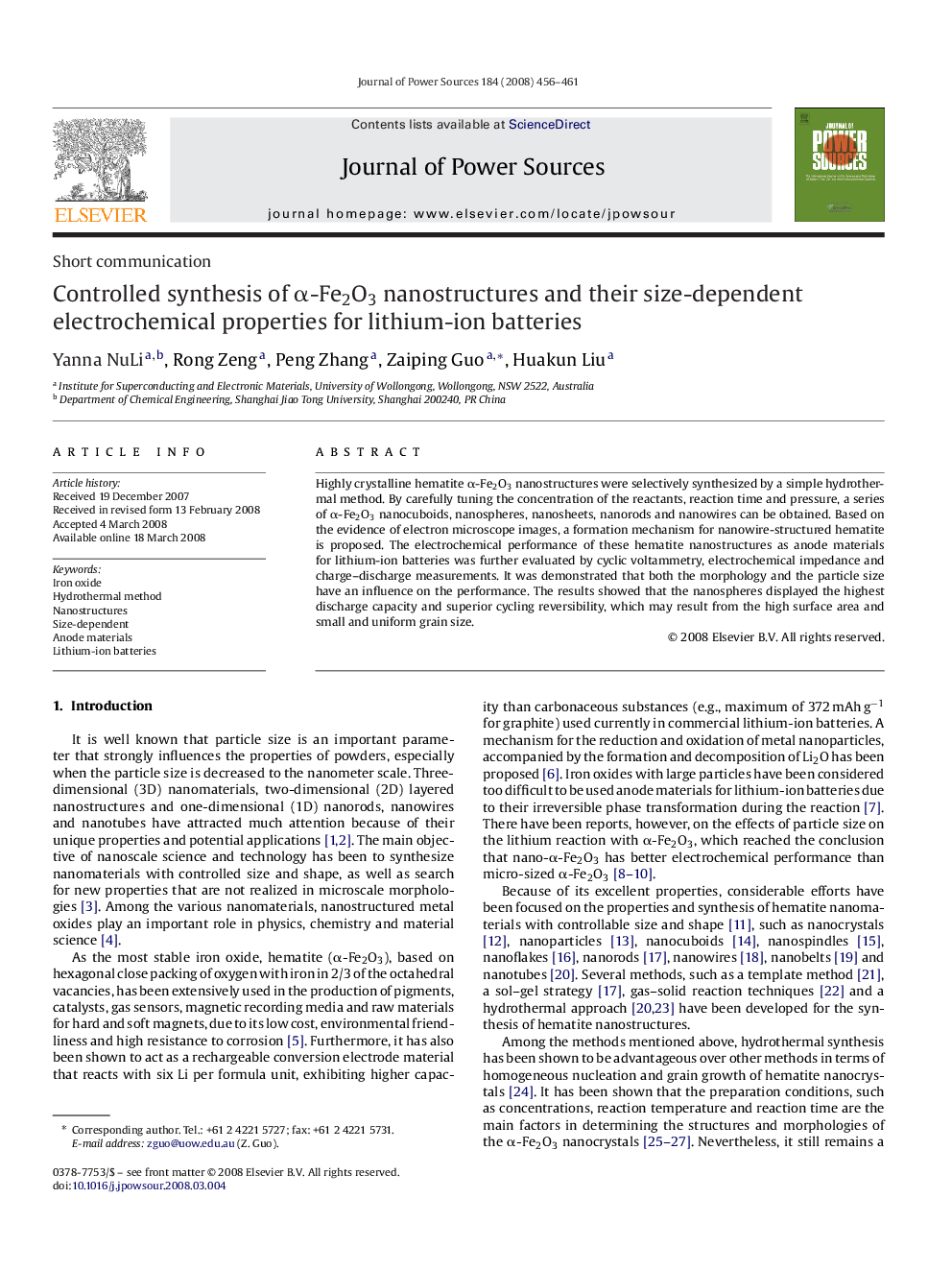| Article ID | Journal | Published Year | Pages | File Type |
|---|---|---|---|---|
| 1294500 | Journal of Power Sources | 2008 | 6 Pages |
Highly crystalline hematite α-Fe2O3 nanostructures were selectively synthesized by a simple hydrothermal method. By carefully tuning the concentration of the reactants, reaction time and pressure, a series of α-Fe2O3 nanocuboids, nanospheres, nanosheets, nanorods and nanowires can be obtained. Based on the evidence of electron microscope images, a formation mechanism for nanowire-structured hematite is proposed. The electrochemical performance of these hematite nanostructures as anode materials for lithium-ion batteries was further evaluated by cyclic voltammetry, electrochemical impedance and charge–discharge measurements. It was demonstrated that both the morphology and the particle size have an influence on the performance. The results showed that the nanospheres displayed the highest discharge capacity and superior cycling reversibility, which may result from the high surface area and small and uniform grain size.
